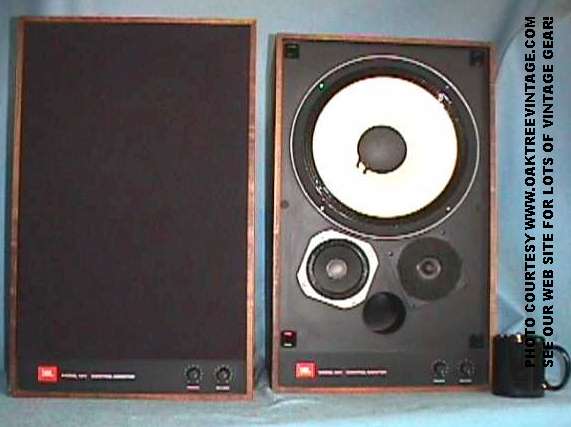savvy
Well, for sure that's how it more or less worked out.
There
is an interesting story kicking around about
the NS10m that we may find on one of those urban legend websites. (And, you know, I'm compulsive about checking most stuff before I pass it along [at least unless noted, which I guess I'm doing here] but I'm pointedly not doing that here in order to get one more trip out of the story.)
According to the story, the product design guys had misjudged the market in the early 80's and produced a big initial run of small, higher quality bookshelf speakers. They had a somewhat tighter freq spec than a lot of consumer speakers and didn't boom at the bottom end at resonance bumps. But that was part of the problem. They didn't boom. The trend was to bigger speakers at the time (column speakers made a brief splash).
So they ended up with a big warehouse in Torrance or Compton, CA, with all these speakers. Some marketing manager for Yamaha was looking at this big sea of boxes, with a few opened up. He was playing with it and realized the front panel (with the grille screen) snapped off, revealing that now-signature stark, white cone.
Supposedly, he looked at it. Stepped back. Looked at it again and then walked about 20 feet back and looked at it again. (The story does not include him holding his thumb up like a Montparnasse street painter, it's tempting to imagine it.)
Anyhow, he liked what he saw. He airballed different ideas with the people there, talking about see-through or translucent screens, but nobody thought that was good, it would just diminish the drama of the white cone -- and besides it was expensive. They just wanted to find a way to unload these things.
Finally, someone said, don't they use bare speakers in TV and recording studios? TV stereo was pretty new then so there was an upgrade and retrofit boom. The marketing guys didn't think they'd have much luck in regular recording studios because they weren't very full range, but it was easy for them to picture them in a TV remote truck, especially since they were relatively small.
At the time, the home studio scene was just beginning. JBL's dominated the small studio scene but were expensive and notoriously uneven -- boomy, but with gaps, and hyped. Talk about a monitor learning curve. But they sounded "impressive" in the C.R. And you do have to impress the client. If you couldn't afford a pair of Urei's [who could?] you could at least kick 'em in the gut with some boomy bass and twist their ears a bit with some tweaky highs. It was into that scene that the NS-10m came in. It tamed and smoothed the high end a bit and really tightened up the bottom in comparison to the unruly 4311.
Where the 4311 could sound impressive, in a way, with its 'smile curve' response, its gappy uneveness tended to make mixers under-compensate in some areas and over-compensate in others.
The NS10m, OTOH, was a fair amount smoother, with a moderately even bass response. It's lack of sub-bass didn't usually get country and rock mixers into trouble, back before synth and 5-string basses (not to mention subbass synthesis) became more commonplace.




